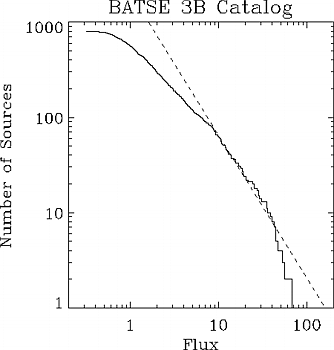
Many of the high-latitude unidentified sources show spectral and time variations similar to those of the identified gamma-ray emitting blazars. It is reasonable to anticipate that those sources are similar to the previously identified blazars. Verifying this depends on reducing the position uncertainties substantially, because many of the error boxes for the unidentified sources contain no bright flat-spectrum radio sources. If dimmer radio sources, which have much higher sky density, are the sites of the gamma-ray production, better gamma-ray source locations are needed to avoid confusion. The unidentified sources near the galactic plane are more problematic. The only galactic high-energy gamma-ray sources identified with certainty are six pulsars. Although some of the unidentified sources are likely to be radio-quiet pulsars like Geminga, some also show substantial time variations (unlike the detected gamma-pulsars). The potential identification of a new class would be a most exciting discovery. The mechanism which accelerates cosmic-ray protons to high energies (thought to be shock acceleration due to supernovae) could be verified from the energy spectra of gamma rays from supernova remnants. The supernova remnant cosmic-ray spectrum is expected to have a spectral index in the range 2.0 to 2.4, which differs from the 2.7 spectral index of the local cosmic rays because of propagation effects. There is strong statistical evidence that some of the EGRET unidentified sources in the galactic plane are supernova remnants. Unfortunately, the identifications are somewhat ambiguous, and improved angular resolution is needed to confirm them.
Objectives:
Requirements:
2.5 THE GAMMA-RAY BURST ENIGMA
Despite 20 years of effort, astronomers have yet to explain
cosmic gamma-ray bursts. This phenomenon is currently the subject of about
one publication/day in the astronomical literature, about the same as the
observed event rate. Bursts occur at random locations, and for about 20
s can be the brightest objects in the gamma-ray sky before fading into
multiwavelength obscurity. Their isotropy and inhomogeneity have been well
documented by BATSE. Strictly from a model- independent point of view,
the global properties of bursts (i.e., their sky distribution and their
number-intensity relation) do not allow the distance scale to be deduced:
bursts could be in the neighborhood of the solar system or at cosmological
distances. Model-dependent arguments, however, rule out many nearby origins,
such as the Oort cloud, or the galactic disk alone, while allowing mixed
two-population models (e.g., disk + halo), some purely galactic halo models,
or a cosmological origin. Each distance scale has different possible gamma-ray
burst progenitors. Colliding comets have been discussed in the context
of Oort cloud models, accreting neutron stars in disk models, high velocity
neutron stars in the halo model, and neutron star- neutron star mergers
in cosmological scenarios.

Figure 2.5.1 - logN/logS for BATSE detected gamma-ray bursts showing the lack of dim sources indicating that the edge of the burst distribution is being sampled.